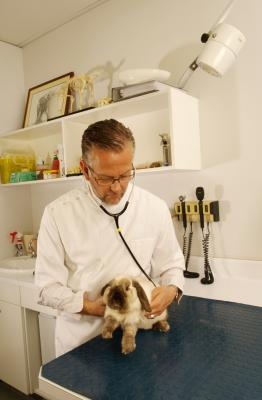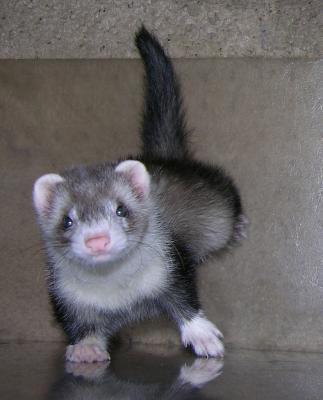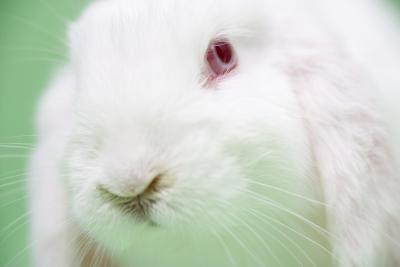
How to Care for an Indoor Rabbit. Caring for an indoor rabbit may seem easier than caring for an outdoor rabbit, because with outdoor rabbits there is the added factor of predators. Cats, coyotes and raccoons can attack outdoor rabbits, while the biggest hazards to indoor rabbits include electrical wires and houseplants. Even though many kids enjoy having the companionship of a pet rabbit, indoor rabbits are best taken care of by an adult. Proper protection, nutrition, care, housing and daily exercise keep your pet rabbit healthy and happy.

Rabbit-proof your home or at least the area that you allow your bunny to roam in. Remove electrical wires and cables or cover them with heavy-duty plastic tubing. Place furniture in front of electrical wires as an alternative. Remove any plants that your bunny may nibble on, because plants, such as poinsettias and aloe plants, are poisonous to it.
Provide your rabbit with housing. Purchase a rabbit cage that is approximately four times the size of your rabbit when it's lying stretched out; the larger the cage, the better.
Place a litter box in a corner of the cage. Fill it with unscented, nonclumping cat litter. Clumping clay litter and pine or cedar-scented litter are toxic to bunnies. Clean the litter daily.
Feed your rabbit a healthy diet. Provide unlimited straw because this promotes its digestive health, and have water available to your rabbit at all times. Place a bowl with commercial rabbit pellets in the rabbit's cage. Stick to the feeding recommendations given on the rabbit food packaging, because as your rabbit ages and increases in weight, the amount of pellets changes. Provide 2 cups of vegetables for every 6 lbs. of your rabbit, daily. Include vegetables such as collard greens, turnip greens and carrot tops.
Allow your rabbit to exercise at least one hour per day. Let it out of its cage and observe it as it hops around and explores the environment. Exercise entertains your bunny and keeps it from getting bored or experiencing digestive problems.
Brush your rabbit's coat with a slicker brush at least twice a week and more often during times of heavy shedding. Similar to cats, rabbits groom themselves and ingest their hair, which can result in hairballs. Brushing your rabbit keeps its coat healthy and reduces hairballs.
Clip your rabbit's nails approximately every two months. Cover your rabbit eyes and body with a towel to keep it from moving. Have a helper hold the bunny while you take one paw in your hand. Use cat nail clippers to trim the nails one by one. Avoid cutting through the pink vein in the nail, because this is painful to your rabbit and means you are cutting too deep. Apply some styptic powder if you've accidentally cut too deep and bleeding occurs.
Bring your pet rabbit to the veterinarian once a year for a checkup. Additionally, take it to the veterinarian whenever it displays signs of illness, such as a runny nose, watery eyes, long-lasting watery diarrhea or loss of appetite.
 How to Care For Newborn Puppies Without a Mother
How to Care For Newborn Puppies Without a Moth
How to Care For Newborn Puppies Without a Mother
How to Care For Newborn Puppies Without a Moth
 How To Choose A Ferret Cage
How to choose a ferret cage. In your quest to have a happy
How To Choose A Ferret Cage
How to choose a ferret cage. In your quest to have a happy
 Common Injuries to Dogs
Accidents hap
Common Injuries to Dogs
Accidents hap
 Top 10 Tips to Ensure Pet Sitting Satisfaction
Whether its s
Top 10 Tips to Ensure Pet Sitting Satisfaction
Whether its s
 How to Take Care of Your Pet Bunny
How to Take Care of Your Pet Bunny
How
How to Take Care of Your Pet Bunny
How to Take Care of Your Pet Bunny
How
Copyright © 2005-2016 Pet Information All Rights Reserved
Contact us: www162date@outlook.com